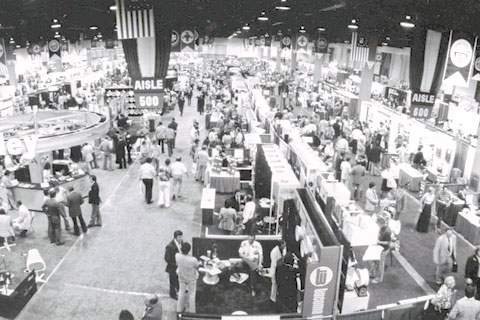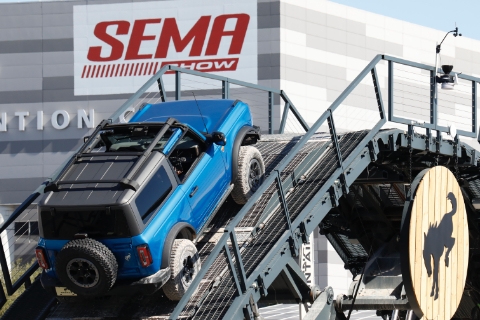By Jason Mulroney
SEMA’S PERSON OF THE YEAR TALKS PASSION, THE INDUSTRY AND A POSSIBLE SOLUTION TO ITS BIGGEST CHALLENGE
Spend five minutes with BOOSTane inventor Ian Lehn and it’s safe to say you’ll want to spend the day with him. On paper, he’s an engineer that geeks out on formulas and is constantly tinkering in the lab for the next new product. Yet, face to face, Lehn is a humorous, thrill-seeking, accomplished athlete whose profound passion for the aftermarket industry is perhaps surpassed only by his love for his dog. We recently sat down with the latest recipient of SEMA’s Person of the Year award to talk watermelons and race fuel.
SEMA Magazine: So, Ian, you mentioned on the phone that you’re leaving for South Africa in a few days. Is that business or pleasure?
IL: Yeah, I am. A small amount of business, mostly there for some rugby and have a look around, though. This year’s shaping up to be wildly busy, so this is kind of my last chance to do something fun for awhile.
SM: That’s right, you’re a keen rugby player. I think I heard somewhere that you’ve played the game at quite a high level, possibly even internationally?
IL: It’s true. I’ve had the opportunity to play abroad with the USA South Team, in Europe and Central and South America.
SM: That’s a very tough game, even for a young man. Going back to your college days, isn’t that where BOOSTane originally came about? Can you tell us how?
IL: Yeah man, basically, my stepdad and his buddies were struggling to get their hands on high-octane fuel. I was also doing some spec-series racing myself and could barely afford a beer back then, so I wanted to come up with an affordable, convenient solution that me and my buddies could run and that, you know, my dad and his buddies could run when they were racing. That is kind of what set me on the path a little bit. And then, you know, I was getting my degree at the time, and it was just a perfect kind of serendipitous situation in that I was getting ready to pick my senior exit thesis, and I thought well, here’s a chance to use a lot of very fancy lab equipment [with] much smarter professors to lean on and work on that.
SM: So it was born from a racing passion and then became the college thesis?
IL: Yeah. The timing was just hilarious because it was just like, man, this race fuel is expensive. And it’s kind of crazy, but it was the summer before my final year, and you have to come up with a Capstone Project, and I just thought, okay, this could be a thing. Why don’t I take a little bit of a crack at this?
SM: Quite the opportunist’s moment then?
IL: Absolutely. And my professor that I ended up working with on this project was my academic advisor for the formula SAE team that I was also involved with at Georgia Tech. So it was just kind of funny. He was a racer himself, so I was like, hey, Doctor C, I have a crazy idea for a project. Would you be down?
SM: So how much R&D went into developing the original product? Or was it literally what you did in college?
IL: No, I mean the original proof of concept happened while I was in school. That’s what I wrote the thesis on. And it was really one proprietary component. That is what I based it around. The continued development of the fuel and its applications kind of happened after the thesis as I graduated. And, you know, it’s very funny because the product as we know it now was really developed while I was farming watermelon.
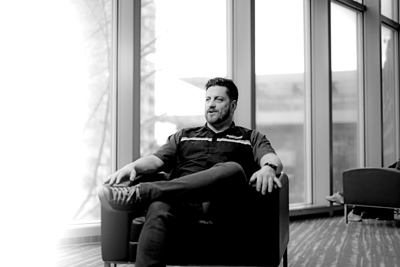
SM: What?!
IL: [Laughs] Right after I graduated college in 2010, I was living in Panama and growing watermelon. Proving some postharvest technology that I was developing, riding a horse everyday to work. However, at the same time, I was coming back home and tinkering and, you know, I would blend stuff, they would go racing. I would do a little bit of racing. And I just kind of kept working on it and developing it, testing it. Essentially it was very organic, the way that BOOSTane the company was born, because it was like I was finding myself coming back to the United States, because the product was getting effective enough that the word was starting to get out. More and more people wanted to use it. So I was having to fly back to the States more and more often. I was making bigger batches. I was spending more time here. And, you know, my watermelon harvests were starting to shrink a little bit. There was that crossroad where it was, ‘Do I want to be a watermelon farmer or a race fuel farmer?’ Next thing I knew, I was like, yeah, let’s give this fuel thing a shot.
SM: Well, that was a heck of a career shift.
IL: I guess I have always been around horsepower. Whether it was one or 1,000. But, you know, I recently emailed my professor, thanking him after all of this. I explained that I don’t know if he realizes it, but I reached out to him at this crossroads for his input, and when we talked he had told me about SEMA. I really had no idea what it was. To think that I had no idea what the SEMA Show was. I always thought if you wanted to do anything with cars, you had to work for an OEM, or you bought stuff from Summit Racing [laughs]. So it was him that really opened my eyes to the need to join the association, and that—once a year—they have this big Show that I should check out. That was when I essentially went home, hopped on the computer and joined SEMA. I got an email from the Young Executives Network [YEN], which is what the Future Leaders Network [FLN] used to be. And then I got an email from Bryan Harrison [former SEMA senior manager of councils] to join YEN on the Hot Rod Power Tour, which back then was called the YEN Power Tour.
SM: What year was that?
IL: In 2014—10 years ago. And all of the people that I literally met at the first SEMA event that I ever went to—such as Lindsay Hubley, who started SEMA Launch Pad, and who’s on the Board of Directors right now; Doug Evans, who was with Hot Rod Power Tour [and] was the Chairman of the Board at the time; and like Johnny Mill, who’s still a very close friend of mine. All these people that are still so influential in the industry—I just so happened to meet all of them at once on my first event and hit it off. Johnny was the Launch Pad winner the previous year. He told me about Launch Pad, and then at my first SEMA Show I win Launch Pad! I’m like, holy cow, this BOOSTane just suddenly became a real-deal company.
SM: It’s been 10 years since you won Launch Pad to now being awarded SEMA’s Person of the Year, which is quite remarkable. Given your passion for the industry, it must have been overwhelming when your Person of the Year award was announced. How did you feel? What were you thinking?
IL: Well, I didn’t believe it. You know, because Josh Poulson, another good buddy, is standing up there, and Jarod DeAnda, and I just thought, man, this can’t be really happening. I never would have anticipated even being considered for something like this honor, especially this early in my career. I’ve never really thought or imagined that I’d get this kind of recognition from my peers. Everybody has been asking me if I knew. If I would have known, I would have had a much better speech than what I gave. I stumbled through an acceptance. I heard it wasn’t that bad, but I’ve never felt like that. It’s one of the greatest things I’ve ever felt and an honor that I don’t know if there’s anything else in my life that I deem that high of an honor.
SM: Knowing how passionate you are about the industry and what you strive for, I can only imagine it’s got to be special.
IL: It definitely is. It feels weird for me because I look at the people that have been Person of the Year before me, people like Doug Evans and Marla Moore, and these names have basically shaped what this whole industry and community have become. To have them come up and say congratulations is surreal. To be in the same conversation is the coolest thing for me. At this point, I feel like it was a very generous tip of the hat from a lot of those titans of our industry and good friends.
At the same time, once the kind of honeymoon wore off, I’ve immediately felt this sense of responsibility. I feel like I need to live up to this award. Which has been cool because, honestly, man, I’m excited for 2024, and I’m taking some of the biggest swings that I’ll ever take in my life as far as my career and racing. Probably even some personal stuff… It’s kind of put me on a course that I don’t think I would have been taking three or four months ago.
It’s strange; just earlier I sent an email agreeing to testify next week before Congress on behalf of the industry’s battle for our future. They asked if I’d be willing to do so, and I was like, heck yeah!
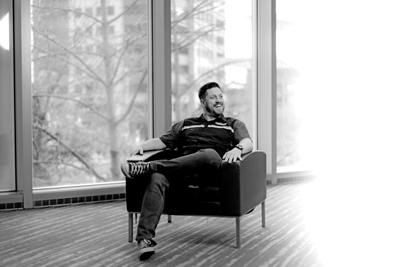
SM: Back to BOOSTane and the early days. How did you manage to scale up the business? Obviously, you nailed the product. You knew you had it where it needed to be. How did you scale it up for production and what were the biggest challenges?
IL: The scaling thing was interesting because, as somebody that’s an engineer, I only minored in business. It was something that I’ve had to learn on the fly in a lot of ways. From the manufacturing and the logistics and supply chain, hell, even accounting, it was a lot of stuff that I’ve had to learn along the way. Luckily, I’ve had a lot of great people around me. I’ve had my dad and step-dad, as well as industry folks that I always felt I could reach out to and would get good advice on these types of things.
The scaling has always been interesting because it was very bootstrapped. I didn’t ask for any private-equity money or anything else like that. I got a little bit of the friends and family investment, and then we scaled it pretty organically. I built our first bottling line myself, and then have been just kind of doing it since—continuing to grow from there.
SM: What were the biggest challenges you faced in the beginning?
IL: The biggest challenge so far has been overcoming the negative stigma around fuel additives and figuring out how to educate around fuel technology. I thought that when I won Launch Pad and showed that we developed new technology that people would line up out the door. And next thing you know, everybody was asking me if the stuff actually worked.
SM: You’re talking about the sort of traditional stigma around it, right? Not anything new. Because that’s been around for decades, hasn’t it?
IL: Yeah, and for a kid who’d never even been to the SEMA Show to say that he’s come up with something that nobody else has, I think a lot of people were skeptical. That’s always been the hardest part of the scalability. It would have happened a lot quicker if I didn’t have to kind of downshift and educate as much as I’ve had to over the years and explain my background and what the product is capable of doing. And so that was probably one of the more difficult things to navigate.
SM: What was the timeframe from, say, those days when you were giving your dad and his buddies a can of race gas to actually bottling your first sellable product?
IL: I would say that the first garage blend happened while I was still in college and then I probably didn’t sell my first bottle of BOOSTane until maybe six months before Launch Pad. So, probably four years.
SM: All right, let’s move on to alternative ICE fuels. What holds the greatest long-term promise, in your opinion?
IL: I think that the greatest long-term promise for synthetic fuels is a sustainable solution for the vehicles of today. It’s not selling an idea or a dream of a technology tomorrow that’s going to solve our problems. It’s coming up with a solution that works today [and is] a foundation for the technologies of tomorrow to continue to build upon. So my thought with synthetic fuels is that electric vehicles are going to be, and already are, a good solution in certain situations, but they are not a solution for everybody right now. So we need to be thinking about today, not just tomorrow.
For everybody to disregard today and hope for a silver bullet for tomorrow is something that worries me, because I think that we can do more damage by doing it that way. We need to organically continue to move the needle toward a greener tomorrow. But it needs to start right now, and it needs to be with technologies that can take vehicles of today and yesterday and make them more sustainable. I’m very excited about a project that we’re working on right now and are developing at a consumer level, high-octane synthetic race fuel.
You know, when a lot of people think of alternative fuels, they think of E85, and E85 is fine, but this is very different. This is a drop-in gasoline, a gasoline-mimicking long-chain hydrocarbon that’s essentially refined from renewable sources. So, if you were to look at them side by side, you really wouldn’t be able to tell the difference between the fuel that I’m developing and the fuel that you would get out of a pump.
There are so many things around. There are plant-based renewable things and, again, that’s where it gets into the weeds a little bit. E85 is an alcohol and an oxygenate that vehicles of yesterday can’t run on. If you have a ‘69 Charger, you cannot put E85 in that vehicle. It’ll disintegrate.
But our fuel, you can drop it in a ‘69 Charger and be fine. All of
a sudden, this ‘69 Charger has a significantly lower carbon footprint than it did yesterday. And that’s where I think a lot of the benefit and the upside of this synthetic fuel is. It’s different than anything that we’ve experienced, such as E85. It is a much
broader solution.
But the thing is—and what I would testify on the Hill and talk about is—SEMA [members] and we need help doing it. Let’s be honest: my small company that started less than 10 years ago is trying to develop something that other larger companies should be doing for the average consumer. But if we get hit with all these regulations such as zero-emissions vehicles—like what California is trying to put in place—that significantly narrows my capability of continuing to fund any type of research and development towards a sustainable solution right now.
Do we feel that confident that we don’t need to be doing any other type of research and development? It’s like everybody feels good about battery electric vehicles being the total solution for everybody. Is that how confident we are?
I’m just not going to put all my eggs in that one basket. It’s scary. That’s why I’m so excited to work on these types of things. And I’m excited that it’s BOOSTane doing it. And SEMA is supporting us, and that’s why I’m in the industry—because I have people like [SEMA Director of Vehicle Technology] Luis Morales at the SEMA Garage and [SEMA President and CEO] Mike Spagnola saying, yeah, we support small companies like yours having crazy ideas such as synthetic fuel.
SM: If you could put a timeframe on it, how many years will it be before we see that significant turning point? The point where these fuels will be tested on a consumer level?
IL: I think legislation will dictate that to a certain degree. If some things pass all of a sudden, I think people will be scrambling for a solution, and the people that have been working on it may be in a place to kind of save the day. That could be tomorrow. But, I would say in the next three to five years you’re going to see, at the very least,
a lot of racing series, let’s say grassroots racing series [using it].
I think you’re going to see quite a few [of them] offering incentives or at least trying their best to adopt a greener a way to make their particular series a little more green in the eyes of the outside world to allow for their racing to be more consumable.
There’s a lot of racing, and people who are not involved in it look at us and say, ‘You guys are just out there doing burnouts and tearing up the woods and doing all these other things.’ Racing has always been a vessel for innovation, and I would put my money on the fact that racing will continue to be that vessel, and certainly for synthetic fuels.
I mean, we’ve already seen some synthetic fuels in IndyCar, IMSA, and there’s some rally series over in Europe, some professional rally series. But there’s really no access to it for the guys like myself who go racing every month or in the series that I race with. We don’t have that type of money or support unless there’s an aftermarket company that’s going to step up and offer that solution. So I would say in the next three years you’re going to see more sustainable fuels playing a part in people’s daily hobbies
and racing.
As far as it becoming a solution for the everyday driver, that’s going to be entirely dependent on whether or not our government wants there to be a solution for today. If they don’t show the same support and incentives that they have for the EV market—tax incentives, rebates, all of these other things—synthetic fuel might only stay in racing. A lot of the innovations that have been developed in racing, from seat belts to backup cameras to all these different types of things, have been adopted into daily-driven vehicles because the government saw their benefits.
SM: Let’s say you nail this new fuel and it’s exactly where you want it to be. Going forward is there still room for additives after that? Or could you possibly force BOOSTane into something totally different?
IL: No, I’m not worried about that at all, because the synthetic fuel technology is continuing to evolve with research and development. I see a lot of opportunity to roll that back down into additives. There’s always going to be room for customization.
BOOSTane as a company has always allowed people to customize their fuel for their customized vehicle. I can make 100-octane synthetic fuel, but there’s always going to be that guy that wants a little bit more, and BOOSTane will be there to help you out.
I’m always going to count on the enthusiast. That’s what I’ve always done from the beginning—count on their passion to continue to try to push the limits. That’s where I put all my eggs, and if you give them that opportunity with synthetic fuel or something else, they will definitely do it. They’re not going to give up their passion. You’ve just got to give them the opportunity. And BOOSTane’s success is [based on that], and my confidence is because of that.
SM: Talk to us about your involvement with the SEMA Emerging Trends & Technology Network [ETTN]. What have you taken away from it, and what advice would you give to other industry pros who might benefit from joining the network?
IL: All of [SEMA’s] networks and councils have some unique benefits to them. And then they all offer [similar] benefits of getting involved and plugging in, and giving you the opportunity to help protect the industry. FLN is a great first step into that if you’re a young person in the industry. I got my start on that select committee. Then I jumped over to ETTN just because I felt like I identified with it a little bit more as an engineer and a technical professional. ETTN is defining emerging trends in technology, and as an industry we should be constantly doing that. If that’s something you feel passionate about, if you feel that’s what’s going to preserve this industry, it’s great.
ETTN is a really good [platform for] your ideas about how things should be shaped for our industry from a technology and innovation standpoint. There’s a lot of smart people in that [network] right now that I feel good about making those decisions and giving good information to the SEMA Board of Directors. That’s what I’ve always loved about it.
SM: Shifting gears a little… Besides the obvious—electrification, ADAS, etc.-what other emerging tech or consumer trends do you see influencing the aftermarket in the future?
IL: I think the evolution of how we market to the end consumer, how that continues to evolve, is one of the coolest opportunities with the greatest ROI for our industry. I mean, never before has information and influence been so readily available. And the opportunity to educate our end users—there’s so many companies out there that are already doing a very, very good job at it—and I think that will always continue to evolve at light speed.
If people are able to pay attention and jump onto some of those trends and use them to their advantage, that’s going to continue to shape our market. It’s nothing like even when I started; there’s never been such a positive feedback loop. It’s kind of funny, because positive feedback loops are literally what tuners do all the time on vehicles. Essentially you can do something with your business and almost immediately get customer feedback to adjust how you’re measuring and/or how it’s working.
That real-time positive feedback is something that I think is going to continue to become more and more instantaneous. That’s going to be awesome and, without sounding like a complete crazy person, I think AI is going have a pretty interesting impact as well, weaseling its way into our space. I don’t know what that’ll look like, and I don’t know where it’ll happen first. But there’s a lot of cool tools that are already out there that I use in my business every day. Not for engineering, but I don’t know how long it’ll be until it creeps into to that facet of my business as well.
SM: And the second the second part of that question is what holds the greatest peril? I’m going to say that the greatest peril has got to be the fuel and emissions issue, right?
IL: The future of the internal combustion engine is the biggest glaring one. People might not recognize AI as being scary, but by God, if you don’t see the future of the internal combustion engine as being in a perilous position, then shame on you. If you don’t recognize how important it is right now for us to [ensure] the internal combustion engine’s [position] in a sustainable future, then I don’t know what you’re doing! I hate saying the word “scared;” I don’t want people to be scared. I want people to be very much aware.
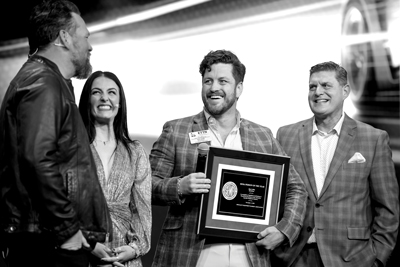
SM: I’ve got two more. Any aspiring entrepreneurs, anyone thinking about starting their own business in this industry, what’s the best advice you can give them, and what skills should they be honing?
IL: Hone in on what you’re good at. Be willing to learn about what you’re not good at. And don’t be afraid to ask people in the industry for help on the stuff that you’re not good at. Because as competitive as the aftermarket industry is, you’ll be surprised how many times even a competitor will help you out...
I mean, I don’t know how many times I’ve talked to folks at VP or Renegade, or even Sunoco. I don’t know how many times I’ve reached out to these folks, whether I needed a particular component to make my formulation [or for something else]. There’s a lot of crossover, and you’d be surprised how many people help you out. There’s always the obvious, cutthroat nature of doing business, but I think it’s a small enough industry that people are willing to help to see it grow as a whole. They say a rising tide raises all ships. I don’t think people want to see competitiveness die, because it’s not fun to run a one-car race all the time. You know what I mean?
And obviously getting involved. There’s no better way to do all the things that I just said than to have a good network of people around you. That’s the only reason why a guy who started a company in 2014 is giving this interview. It’s because of the people and the friendships that have helped me out, getting me here, along the way.
SM: All right, last one. So, when you’re not working, where will we find you and what will you be doing?
IL: Ha! You’re gonna find me probably working on cars. Almost sounds like I’m just saying that; it’s probably what most say. But when I’m not working, I’m in the garage. Or I’m trying to find ways to be competitive, like, rugby is one of my favorite outlets to blow off steam, tackling people and not getting in trouble for it. You’re either going to find me playing rugby, hanging out with my dog, camping and overlanding sometimes, or honestly, most likely, working on a race car.

